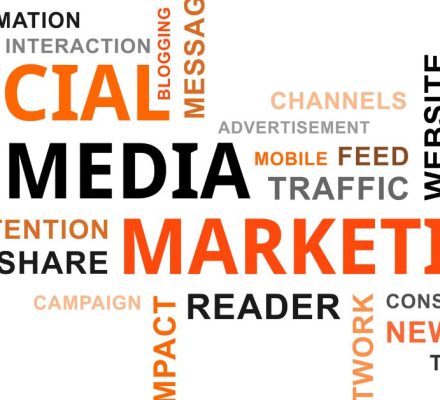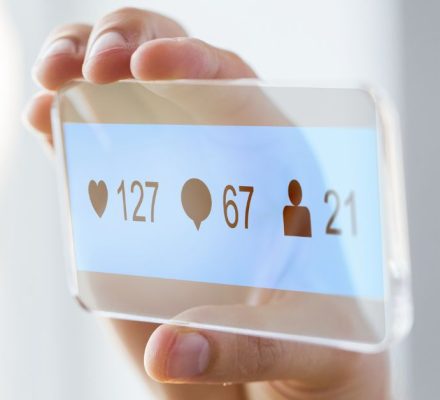How does social media marketing affect small businesses? This article will explain how SMM can benefit your company.
According to a study by Pew Research, social media is growing rapidly among American adults. In fact, Pew Research found that in 2012, 68% of American adults used social media. Of those 68% who used social media, 74% used Facebook, 68% used Twitter, and 56% used LinkedIn.
Step 1: Understand the Pew Research Study
According to a Pew Research study, social media marketing is the most effective way for small businesses to reach customers. Social media platforms allow businesses to build relationships with customers by sharing valuable content and engaging in conversations. This helps small businesses stay top of mind and build trust with their customers. Additionally, social media marketing tools are affordable and can be used by small businesses without a large budget.
Step 2: Identify Your Target Audience
Social media marketing can be a great way to connect with your target audience and build relationships. By understanding who you are targeting, you can create effective content and campaigns that resonate with them.
First, identify your target audience. Are you targeting small businesses, entrepreneurs, or individuals? Once you know your target audience, consider what type of social media platforms they are most active on. For example, if most of your target audience is active on LinkedIn,
then creating content for LinkedIn would be a good strategy.
Additionally, consider the demographics of your target audience- for example, do they tend to be younger or older? Knowing this information can help you design campaigns that are more likely to reach them.
Once you have an understanding of who your target audience is and what platforms they use most regularly, start building content and campaigns that appeal to them. For example, if most of your target audience uses LinkedIn for business purposes, create content that showcases businesses in your industry that have successfully used LinkedIn marketing strategies.
Additionally, consider using social media advertising to reach out to your target audience directly- this can be done through paid or organic ads on specific platforms. By catering your campaign specifically to your target audience, you are more likely to reach them and convert them into customers.
It’s important to remember that social media marketing is a continuous process- as new platforms emerge, so too does the need for updated content and strategies. By staying up-to-date on the latest social media trends, you can create successful campaigns that will benefit your small business.
Step 3: Choose the Right Social Media Platform
Social media platforms have become an essential part of marketing for small businesses. In fact, a 2015 study by the Small Business Administration found that social media is the most effective form of marketing for small businesses. What’s more, a 2017 study by SocialBakers found that 83% of social media users trust recommendations from friends and family more than any other source when it comes to making purchasing decisions.
That being said, not all social media platforms are created equal when it comes to how they can benefit your small business. Here’s a look at the three main types of social media platforms and their corresponding benefits for your business:
Facebook:
Facebook is the world’s largest social network with 1.71 billion active users as of March 2018. 90% of consumers in North America use Facebook, and 73% of consumers in Europe use Facebook. In addition, 87% of B2B marketers use Facebook as their primary platform to connect with customers and employees. For small businesses,
there are several key benefits to using Facebook that include: A large user base
– 90% of North American consumers and 73%of European consumers are on Facebook, making it a extremely popular platform for marketing.
– 90% of North American consumers and 73%of European consumers are on Facebook, making it a extremely popular platform for marketing. Reach
– Facebook has more than 2.2 billion active users, which gives your business the opportunity to target a large audience.
– Facebook has more than 2.2 billion active users, which gives your business the opportunity to target a large audience. Engagement – According to SocialBakers, 91% of Facebook users engage with content on the site at least once. This means that if you create quality content that is relevant to your audience and shares valuable information, you’re likely to get engagement from your followers.
LinkedIn:
LinkedIn is the largest professional network in the world with over 700 million members as of March 2018. 76% of B2B marketers use LinkedIn as their primary platform to connect with customers and employees. For small businesses, there are several key benefits to using LinkedIn that include: A huge pool of potential customers
– With over 700 million members, LinkedIn has a vast pool of potential customers who can be reached through targeted advertising campaigns.
– With over 700 million members, LinkedIn has a vast pool of potential customers who can be reached through targeted advertising campaigns. High level of trust – 81%of people say they trust professional recommendations from people they know on LinkedIn, which makes it an effective tool for building relationships with potential customers and employees.
– 81%of people say they trust professional recommendations from people they know on LinkedIn, which makes it an effective tool for building relationships with potential customers and employees. Powerful search engine optimization (SEO) capabilities – As a member of the Google suite of platforms, LinkedIn offers businesses powerful SEO capabilities that can help boost your website traffic rankings.
Twitter:
Twitter is one of the most popular microblogging platforms in the world with 319 million active users as of March 2018. 66%of Americans use Twitter monthly and 49%use Twitter daily . For small businesses, there are several key benefits to using Twitter that include: A low-cost social media solution
– Twitter is free to use , meaning that there’s no upfront cost associated with setting up an account and starting marketing on the platform.
– Twitter is , meaning that there’s no upfront cost associated with setting up an account and starting marketing on the platform. Easily share links – Unlike other social media platforms where sharing links requires embedding code or copying and pasting URLs directly into tweets, tweeting links is easy via the @ symbol followed by the link address .
– Unlike other social media platforms where sharing links requires embedding code or copying and pasting URLs directly into tweets, tweeting links . Rapid response times – due to its short message format (SMS), tweets can be sent quickly and responses are often seen within minutes rather than hours or days like some other social media platforms .
LinkedIn:
LinkedIn is one of the largest professional networks in the world with over 450 million members. The LinkedIn is a great platform for building relationships and networking with like-minded professionals. Professionals can post their jobs, company information, and more. It’s also a great way to stay up-to-date on industry news and announcements.
Twitter:
Twitter is a microblogging site that allows users to send short 140-character messages to their followers. It’s perfect for sharing links, thoughts, and updates on your day-to-day activities. Plus, due to its quick response times, Twitter is perfect for responding quickly to followers who have questions or comments about your posts.
Step 4: Create Engaging Content
Small businesses should be creating engaging content on social media to attract more followers, customers and leads. Social media marketing affects small businesses in a few ways. Firstly, it allows smaller businesses to reach a much wider audience than they would be able to through traditional marketing methods. Secondly,
it provides small businesses with the opportunity to interact with their customers and followers in a more informal way,
which can build trust and loyalty. Finally, social media marketing can help promote small businesses’ products and services to a global audience.
Step 5: Promote Your Content on Social Media
There are many benefits to promoting your content on social media. Not only will this help you connect with potential customers and followers,
but it can also help you build brand awareness and grow your audience. By using effective social media marketing tactics, you can encourage people to follow your profile and view your posts, which can lead to increased website traffic and sales.
If you’re new to social media marketing, start by creating a strong profile that highlights your company’s values and mission. Share interesting stories about your business or products,
post photos that show off your product or service in action, and reply to comments from followers. You can also use targeted advertising on social media platforms to reach specific demographics.
For example, if you sell furniture, you might target Facebook users who live in the area you’re selling in. By using these strategies wisely, it’s possible to promote your content on social media without spending a lot of money!
Step 6: Analyze and Optimize
There is no question that social media marketing has had a massive impact on small businesses over the last few years. It can be used to create awareness for a business,
attract new customers, build relationships with existing ones, and generate leads and sales. However, it is important to analyze and optimize social media marketing campaigns in order to achieve the most effective results. There are several factors to consider when planning a social media marketing campaign,
including target audience, messaging, budget, and timelines. By taking these into account, businesses can ensure that their campaigns are reaching their desired audiences and achieving the desired results.
Conclusion
Social media is a powerful tool for businesses of all sizes. By following the steps above, you can create a successful social media marketing campaign that will help you reach your target audience.







